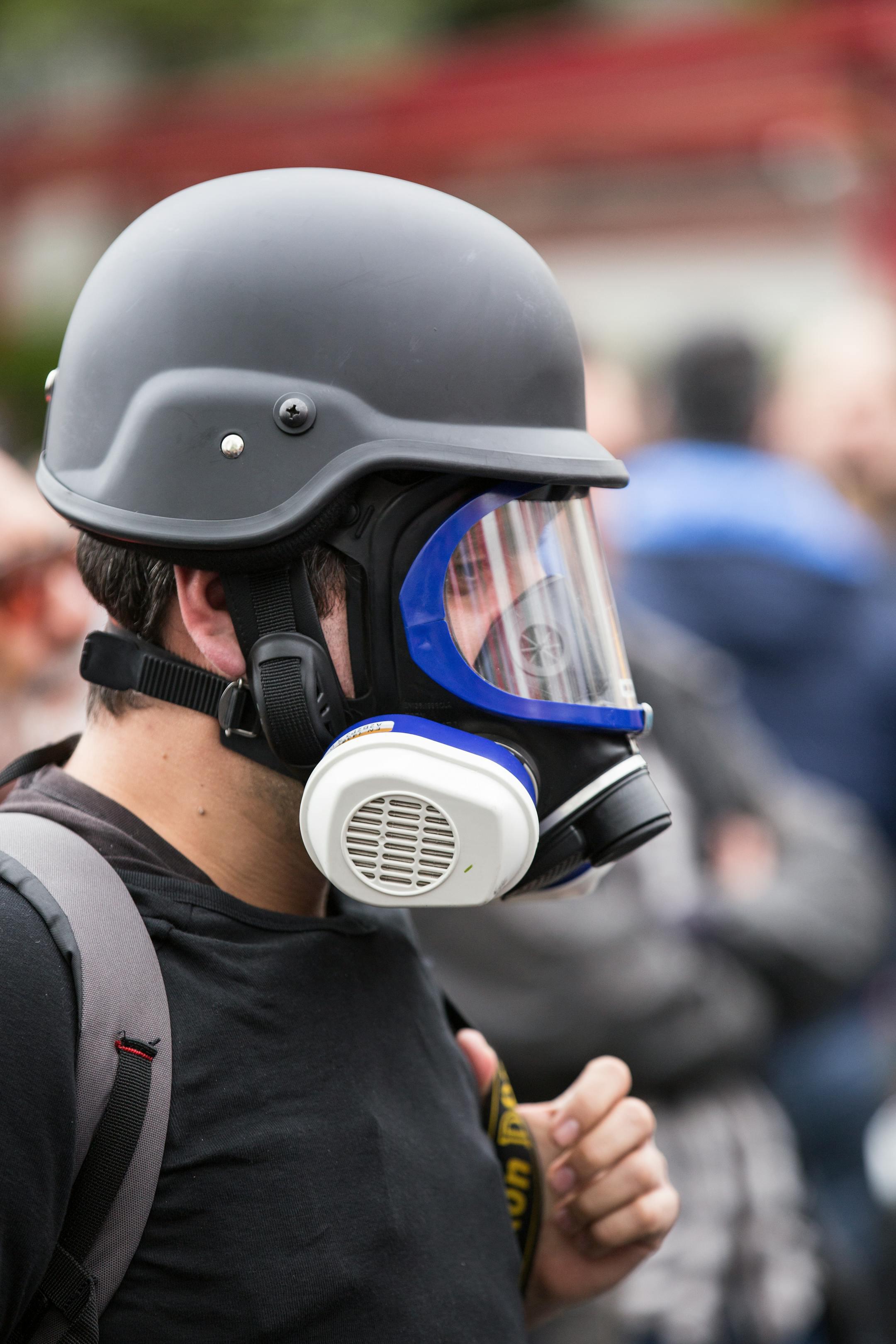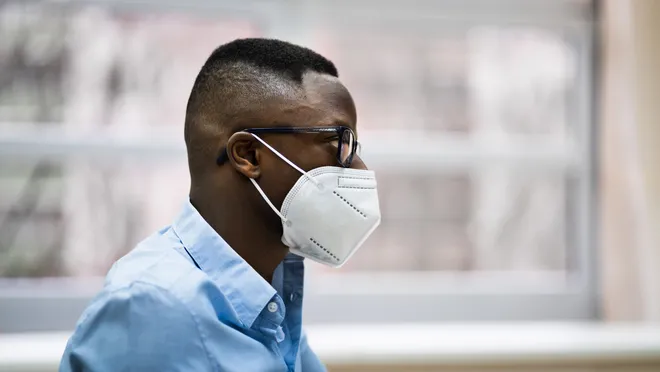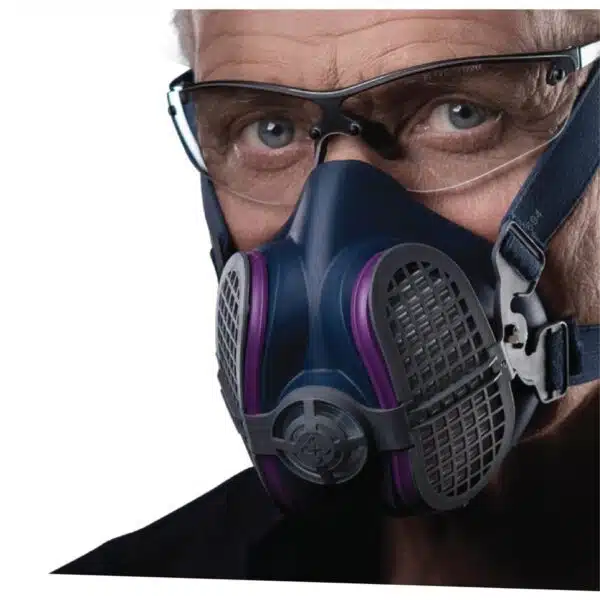
Journalists who cover protests, riots, and civil unrest are regularly exposed to hazards ranging from airborne debris to chemical irritants like tear gas and pepper spray. Protecting your respiratory system is a critical safety measure.
Choosing the appropriate respiratory protection means understanding the specific threats you’re likely to encounter and choosing a mask that fits your assignment and your safety needs. This report will introduce three main categories of masks suitable for journalists working in environments of civil unrest.
Disposable N95 Respirators: Light Protection, Convenient.
Overview:
The disposable N95 mask is a particulate-filtering respirator certified to filter out at least 95% of airborne particles. These masks are common and inexpensive, and they can offer basic protection against certain airborne hazards.

What It Protects Against:
- Dust and airborne particulates (e.g., debris, ash, smoke particles)
- Biological aerosols (e.g., certain bacteria and viruses)
What It Does NOT Protect Against:
- Tear gas (CS gas) or pepper spray (OC spray)
- Chemical vapors or gases
Pros:
- Lightweight, portable, and easily carried in a pocket or bag
- Affordable and disposable
- Quick to put on, even under pressure
Cons:
- Single-use or limited reuse
- No protection from chemical irritants or vapors
- Effectiveness relies heavily on proper fit and seal, which is difficult with facial hair or varying facial shapes
Best Use Case for Journalists:
N95 masks are ideal if you anticipate coverage involving significant dust, smoke from fires, or debris. However, if there is a strong likelihood of chemical irritants like tear gas or pepper spray, you’ll need more comprehensive protection.
Half-Face Respirators: Comprehensive and Reusable Protection
Overview:
Half-face respirators, made from silicone or rubber, cover your nose and mouth and utilize replaceable cartridges or filters. With the right cartridges—specifically P100 particulate filters and organic vapor (OV) cartridges—they offer strong respiratory protection from both particulate matter and chemical irritants.

What It Protects Against:
- Tear gas (CS gas) and pepper spray (OC spray)
- Smoke particles and airborne particulates
- Many organic chemical vapors
Pros:
- Reusable, cost-effective over time
- Reliable seal and secure fit during dynamic activity
- Highly effective filtration against tear gas and pepper spray
Cons:
- Slightly bulky, requires careful storage and regular maintenance
- Can fog up eyewear if improperly fitted or worn
- Communication can be muffled; audio recording may be challenging
- MUST BE WORN WITH SEPARATE EYE PROTECTION
Best Use Case for Journalists:
These respirators, when used with Z87+ rated eye protection, are optimal for journalists regularly covering events where tear gas and pepper spray deployment is likely. Because of their combination of comfort, reliability, and strong protection, elastomeric half-face respirators are the most common choice among seasoned journalists reporting from volatile situations.
Full-Face Respirators: Maximum Protection at Higher Complexity
Overview:
A full-face respirator covers your entire face, providing protection for your respiratory system and eyes simultaneously. Like half-face respirators, these masks also use replaceable cartridges and filters, offering equivalent respiratory protection but adding comprehensive eye protection.

What It Protects Against:
- All hazards listed under half-face respirators (tear gas, pepper spray, particulates)
- Provides integrated eye protection against chemical irritants and debris
Pros:
- Complete face and eye coverage, protecting against direct chemical irritants
- Higher level of overall protection, especially in extreme conditions.
Cons:
- Bulky and potentially intimidating or conspicuous
- Can impair communication, audio recording, and camera operation
- Higher maintenance, requiring regular cleaning, storage, and careful cartridge management
Best Use Case for Journalists:
A full-face respirator is suitable for assignments where intense, sustained exposure to tear gas or pepper spray is expected—for example, situations with prolonged clashes or significant chemical deployment.
Considerations for Selection: Balancing Safety and Functionality
When deciding which type of mask suits your needs, several key factors must be considered:
1. Likelihood of Exposure:
Evaluate your expected environment. Disposable N95 masks are insufficient in chemical-laden environments; half-face or full-face respirators become necessary.
2. Assignment Duration:
Short assignments with mild hazards may justify disposable masks, but longer assignments or repeated exposures strongly favor reusable respirators with replaceable cartridges.
3. Communication and Professional Needs:
Journalists must speak clearly, record audio, and operate cameras. Masks that obscure speech or obstruct vision can significantly complicate reporting. Full-face respirators, while highly protective, may present communication and equipment challenges, making half-face masks with separate eye protection a more practical balance.
4. Comfort and Fit:
The effectiveness of any mask is contingent upon a proper fit. Fit-testing your mask in advance ensures it provides the protection you expect. Facial hair, glasses, or unique facial features can impact how masks fit and seal.
Care, Maintenance, and Training
Simply owning respiratory protection isn’t enough; you must know how to properly use, maintain, and store it:
- Fit-Testing: Conduct periodic fit-testing to ensure your mask provides a proper seal.
- Cartridge Replacement: Replace filters and cartridges regularly, based on usage guidelines or expiration dates. Always carry spare filters or cartridges on assignment.
- Cleaning and Storage: Regularly clean masks according to manufacturer instructions. Store masks in airtight bags to keep filters clean and ready.
- Training and Practice: Don’t wait until an emergency to learn how your mask works. Practice donning and removing masks rapidly and safely, ideally under stress conditions.
Making Your Choice
For most journalists regularly covering civil unrest, a half-face respirator fitted with P100 particulate and OV cartridges is the recommended baseline. It offers the protection that meets the demands of most field reporting scenarios.
However, every journalist must evaluate personal circumstances, professional duties, and specific assignment risks. Your safety plan should always align with your level of training, comfort, and practical realities of the field.
Crisis Ready Media’s goal is to empower journalists with practical knowledge, preparation, and the right equipment choices. Respiratory protection isn’t just about comfort—it’s about your ability to safely do your job under hazardous conditions.
Choose carefully, train well, and work safely.
